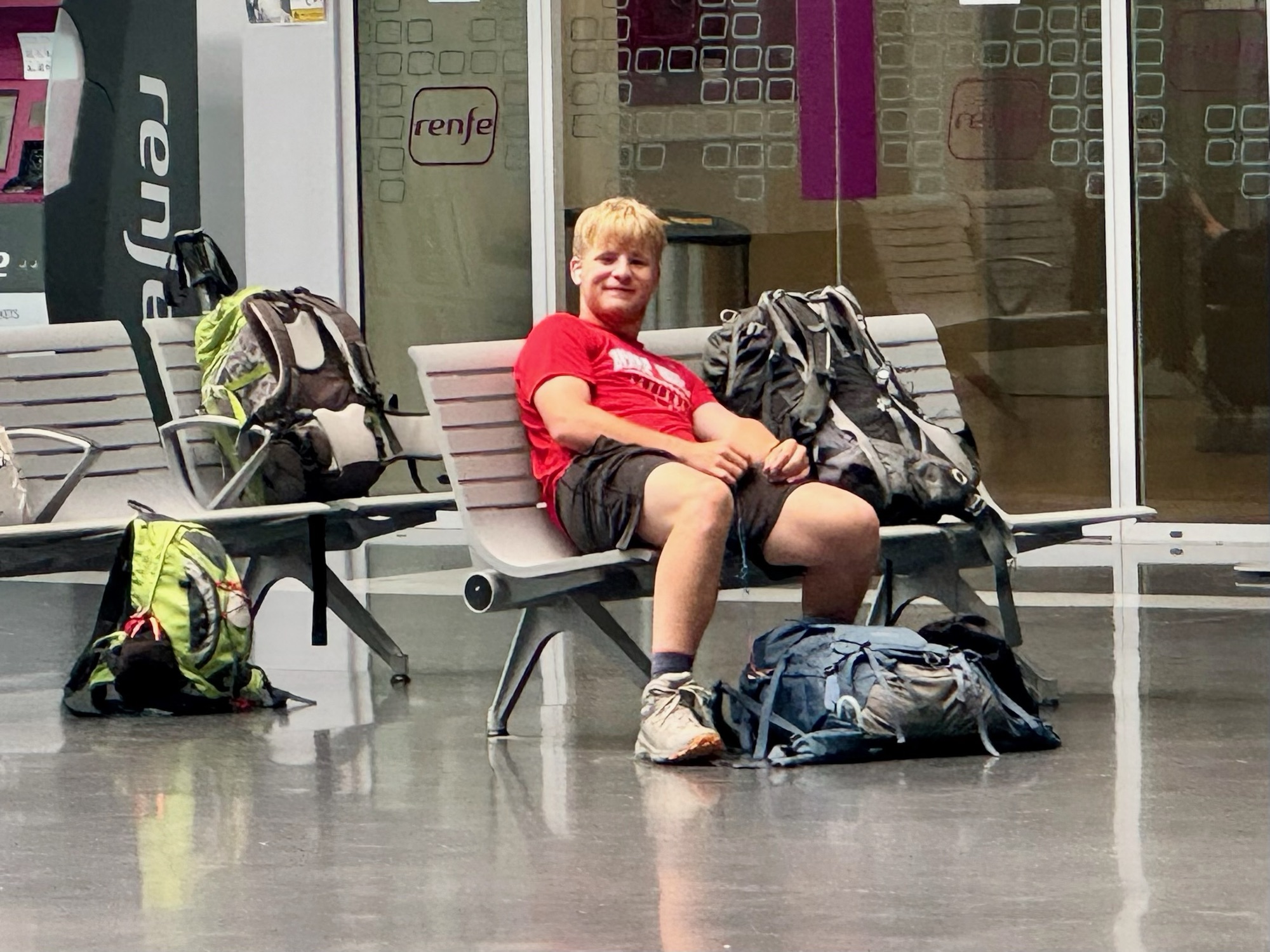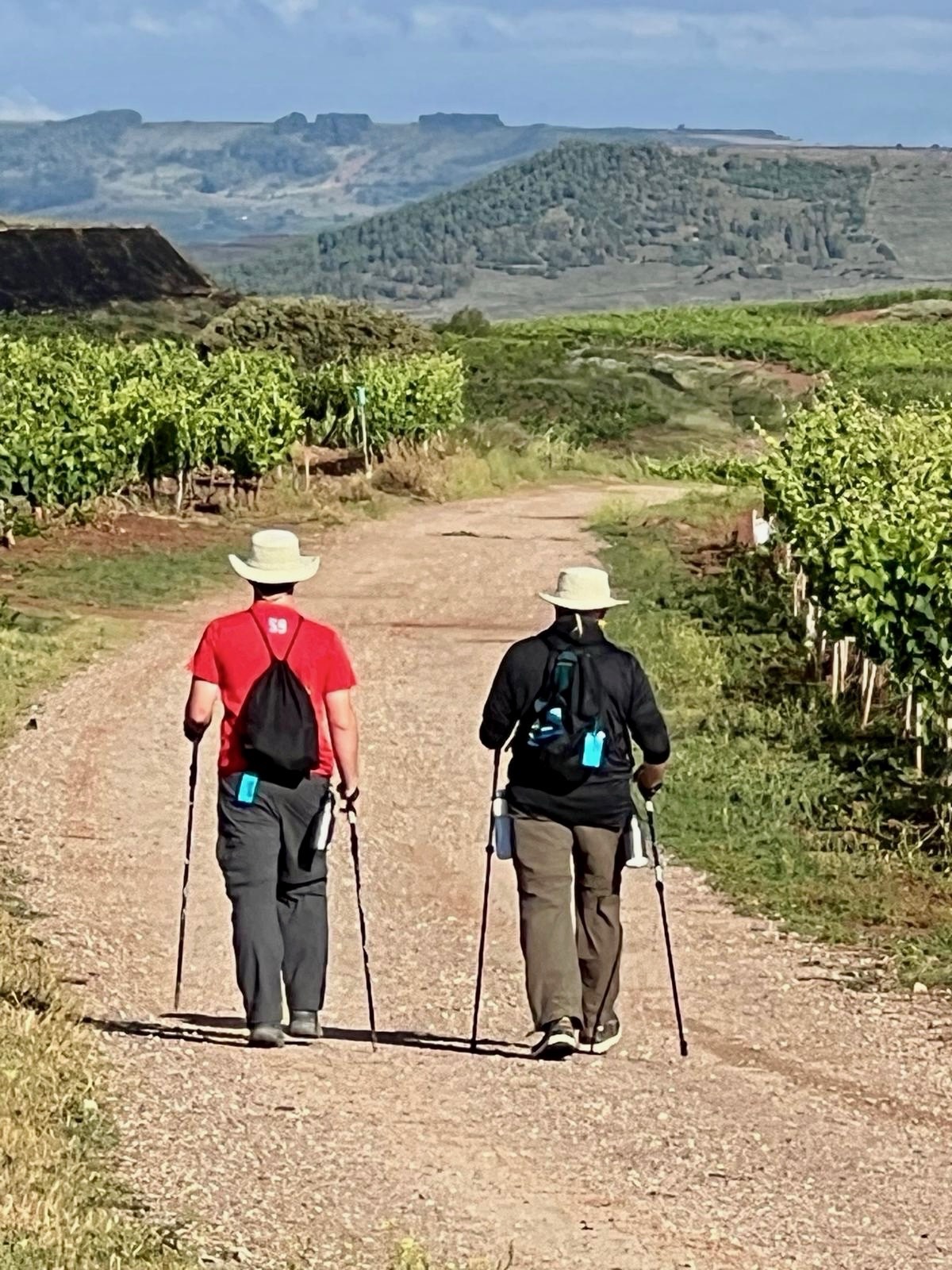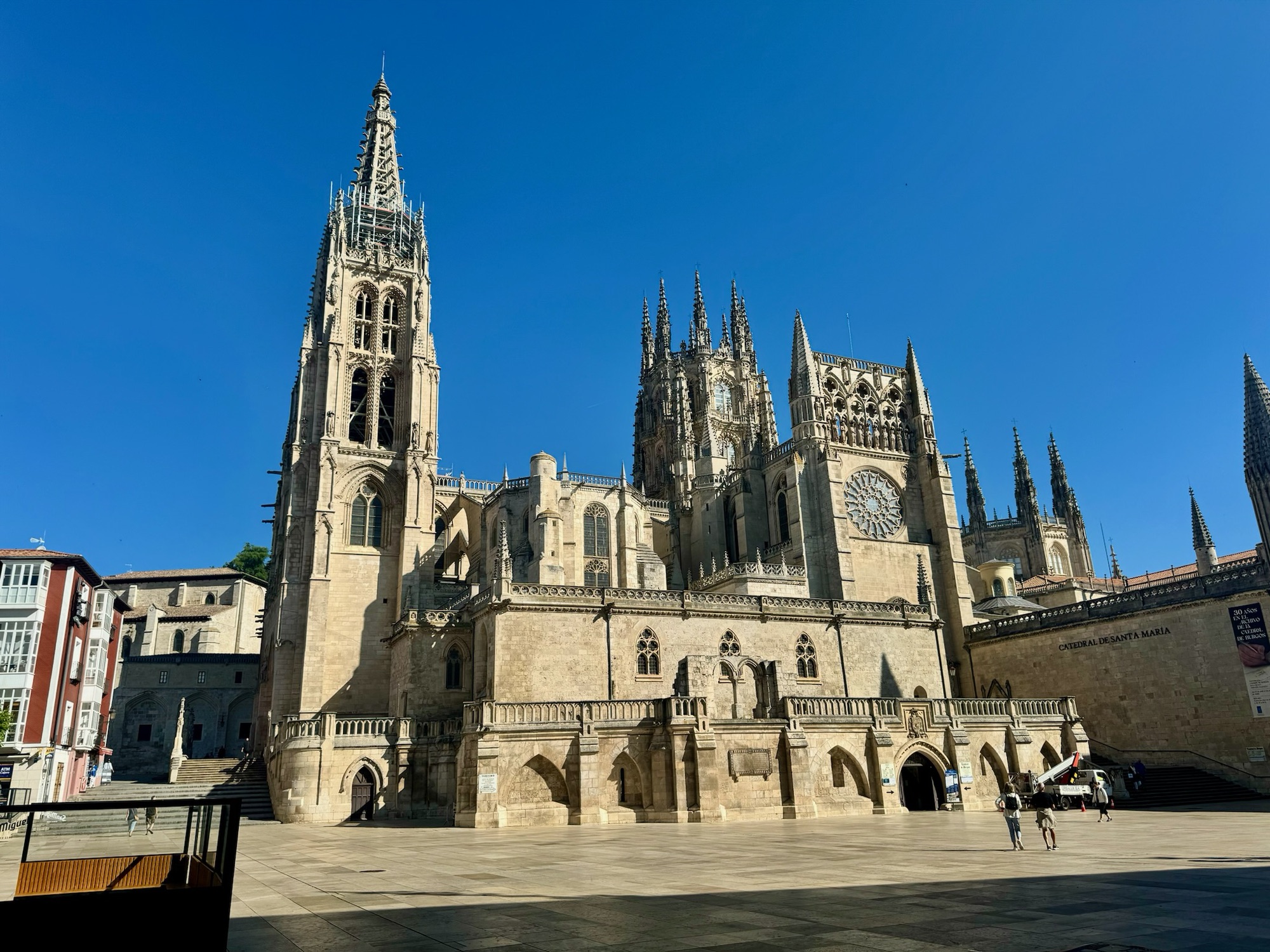
Dear Christine, Renee, Friends and Followers.
My intention has been to take the posts and photographs of our journey in Spain and render them into a book to give to Britton. I don’t believe the book would be complete without some “Grandfatherly” advice:
Dear Britton.
It has been a little more than a week since we returned to Kansas City from Spain, and today was your first football practice. The rest of the team has been practicing while you were gone. You feared they would be mad at you for “skipping out”. Against your wishes, your mom made you go.
As we predicted, you were enthusiastically welcomed by your coaches and teammates. You also “kicked ass” at the team drills and sprints. After I learned of all this, I sent you a text, “Hey Mr. B. I understand you were greeted by your coach and team as the conquering hero returned from Spain! Congratulations… it’s what I predicted. Love, Grandpa.”
“Love you too. I didn’t think it would turn out like that.” was your reply. To which I then added, “With age comes wisdom!”
Finally, you exclaimed: “Okay Gandalf!!” and followed with a couple of smiley faces.
I will take this exchange as my license to speak to you as your very own “Grandalf”.
I don’t know whether you will be reading this at age 15, 25, 50 or beyond. I don’t know whether you will be sharing it with your child or grandchild. As I write this at age 72, I am mindful that these words and the telling in this book of our adventure together in Spain will long outlive me. I hope that the power of my advice does too.
You are an amazing person. Kind, thoughtful, caring, and so very capable of anything you put your mind to. (Here you must say “Thank you”. Remember, every compliment is a gift!) You also tend to be unsure of yourself, presuming others won’t think you are good enough, strong enough, smart enough… Britton, you ARE good enough, strong enough, smart enough! Do not let your insecurity become a self-fulfilling prophecy. BELIEVE IN YOURSELF!! I believe in you, your Grandmother believes in you, your Mom believes in you, as does anyone who knows you.
Britton, don’t be seduced into believing that adventure is what someone else experiences and then posts on social media. You are fresh back from a REAL adventure, not one made up for video courtesy of big financial sponsors and a huge support crew hidden in the background. It is also not your first adventure that I have witnessed: I watched with tears of pride as your Lacross team descend upon you at the end of the season’s final game. “Brick Wall Benscoter!” they called out… a team that had not won a game until you took the post of goalie in the last 5 games, winning 4 out of 5 of those matches! That’s a REAL adventure.
Opportunities present themselves, often when we least expect them. It is you who must recognize them and act upon them, seizing opportunity and creating your own adventures. I know this because it is how my life has played out.
Adventure is not only hair raising, adrenaline pumping, edge of your seat excitement. Adventure can be the challenge of doing well on a test, achieving a goal at work, getting recognition for a job well done, or even having an attractive “someone” agree to go out with you on a date.
Often, what you want is located on the other side of things you don’t like. You have spoken of several ambitions that you hold. Just as often you have mentioned some things that you don’t particularly like, such as reading, studying, and commitments to long term educational programs. To achieve your goals you will need to embrace and power through some of those things you don’t like. You may find that once you aggressively tackle what you don’t like, your success will bring with it a liking for that thing. This too is “adventure”, the adventure of discovering what you are capable of.
Over 30 years ago I decided that I would never leave unsaid what I considered the most important advice to my children. You have heard me speak these words countess times. I will repeat them here as my final offering to you:
Have Fun. Because life and your pursuit of it should be fun.
Do Good. (Two things) Do what is right, and Do your best.
and Be Safe for the sake of those who love you… as I do.
Peace Britton, Grandpa. (aka, Grandalf the Wise!)




















































